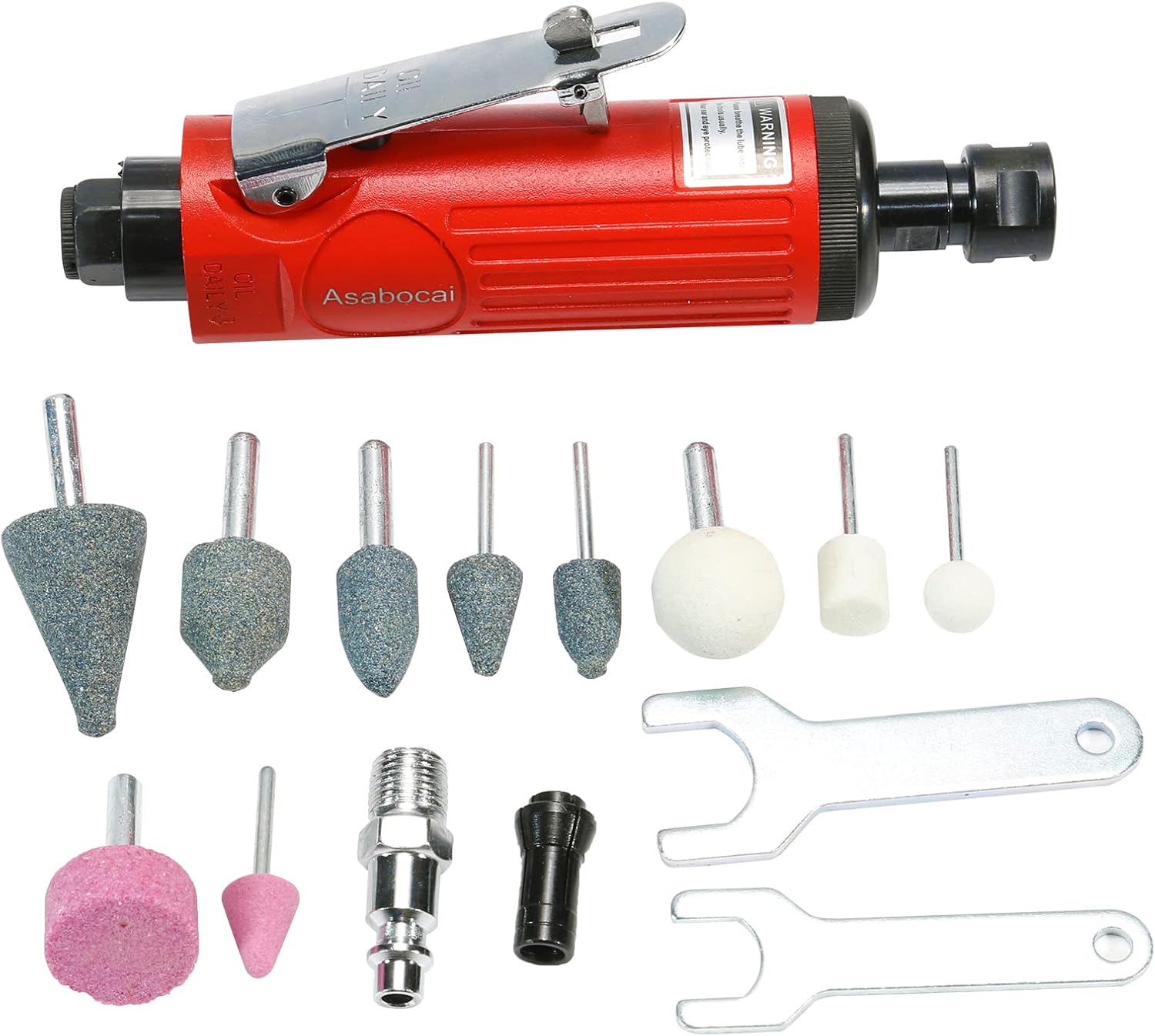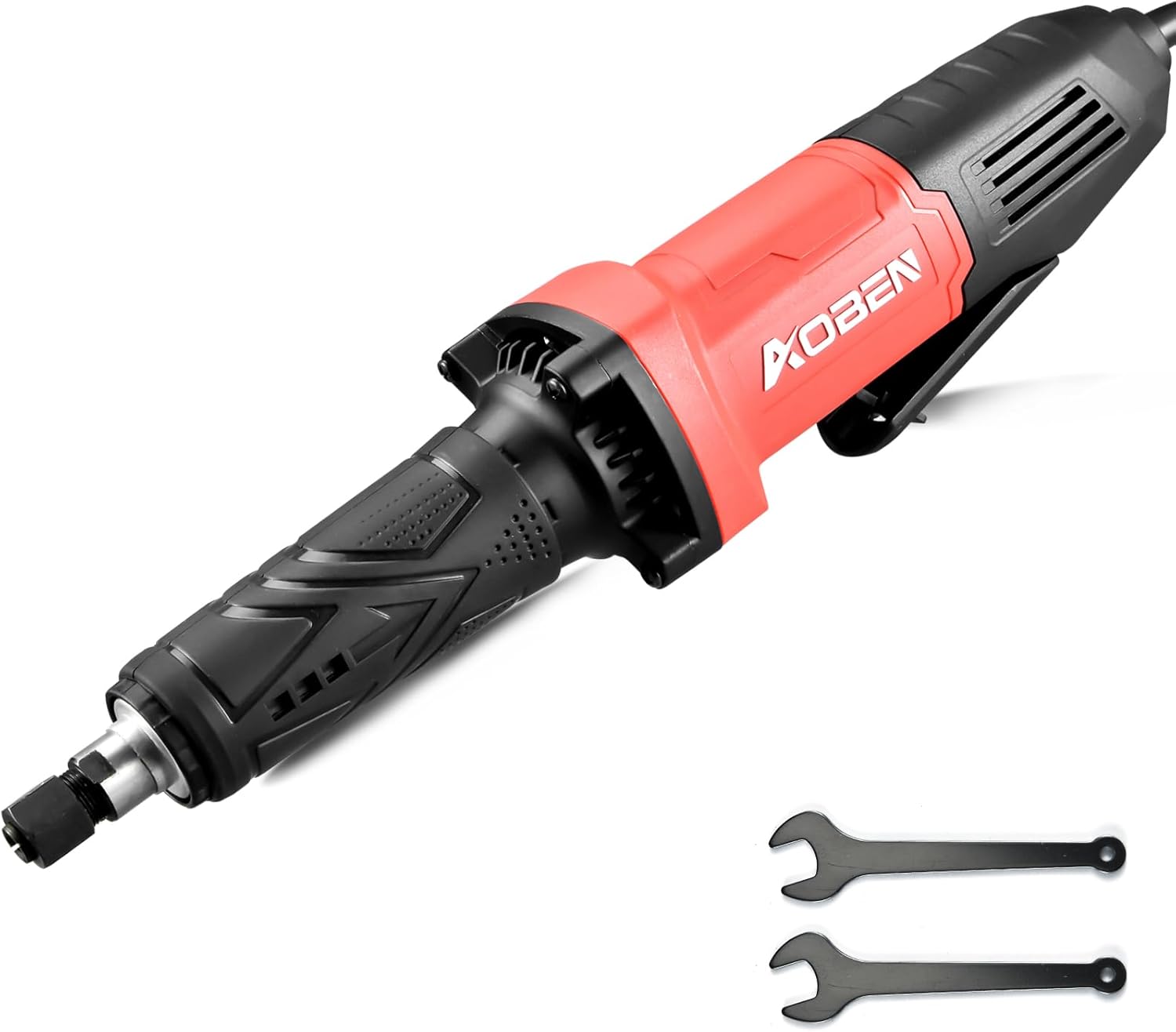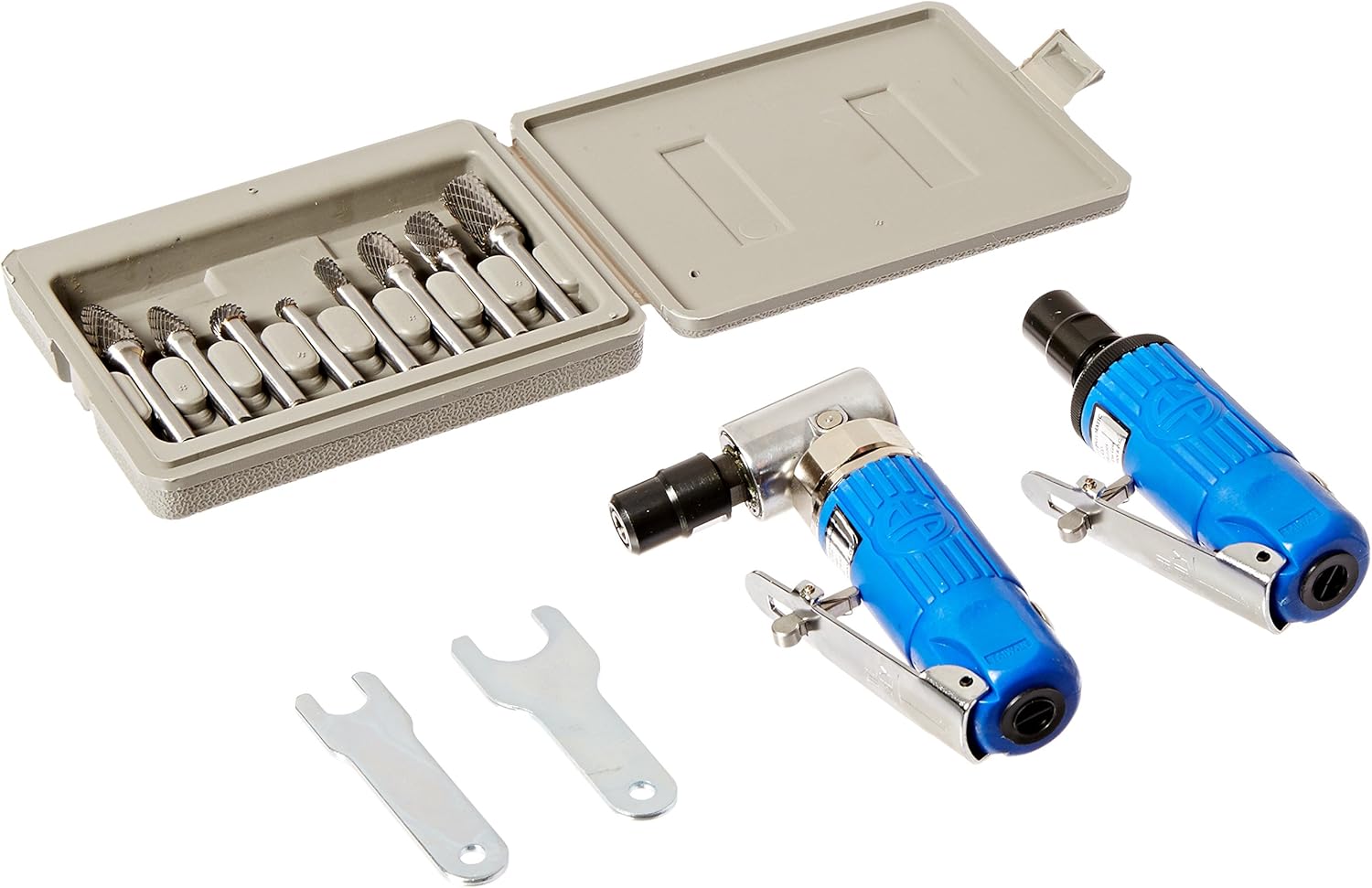Die grinders, also known as rotary tools, are handheld power tools used for grinding, sanding, honing, polishing, or machining material. These versatile tools are a staple in the metalworking industry, but their utility extends to other areas such as woodworking and construction. Die grinders are essential for tasks that require precision and detail, making them an indispensable tool in many trades.
The importance of precision grinding and polishing cannot be overstated. These processes not only affect the appearance of a product but also its functionality and longevity. Precision grinding ensures that parts fit together perfectly, reducing wear and tear and extending the life of the product. Polishing, on the other hand, enhances the aesthetic appeal of the product, making it more attractive to consumers.
Understanding the intricacies of die grinders, their uses, and their maintenance can help you make the most of this tool. This article aims to provide a comprehensive guide on die grinders, their importance in precision grinding and polishing, and tips on choosing the right grinder for your needs.
Our Top Die Grinders Picks

1/4inch Air Powered Die Grinder
Check on AmazonKey Specs
- Speed: 22,000 RPM
- Power Source: Air-powered (pneumatic)
- Collet Size: 1/4″ and 1/8″
- Safety Feature: Locking throttle lever for accident prevention
- Construction: Durable ball bearing for better balance and less vibration
The 1/4-inch Air Powered Die Grinder from Asabocai is a powerful tool designed for precision work in tight spaces. Operating at 22,000 RPM, this air-powered grinder is ideal for grinding, polishing, deburring, and shaping with ease. Its compact and lightweight design makes it easy to handle, while the integral safety-lock throttle lever ensures safety during operation. The ball bearing construction reduces vibration and prolongs the tool’s life, making it perfect for both DIY and professional use.

AOBEN 1/4″ Electric Die Grinder Tool
Check on Amazon
Key Specs:
- Speed: 28,000 RPM
- Power Source: Corded electric (110V)
- Collet Size: 1/4″
- Design: Rubber-coated handle for comfort and reduced vibration
- Safety Feature: Safety switch and speed control for smooth operation
The AOBEN 1/4″ Electric Die Grinder Tool combines power and precision for a variety of grinding, deburring, and polishing tasks. Powered by a pure copper motor, it reaches an impressive 28,000 RPM, ensuring high-efficiency performance on metal, wood, and plastic. Its ergonomic design with a rubber-coated handle enhances comfort, minimizing fatigue during extended use. Featuring a versatile 1/4″ collet, it’s ideal for different accessories. Plus, the low-noise operation and safety switch enhance both convenience and safety.

Astro Pneumatic Tool 1221 Composite Body 1/4″ 90° Die Grinder
Check on Amazon
Key Specs:
- Power Source: Pneumatic-powered
- Included Components: 1/4″ 90° die grinder, 8-piece double cut carbide rotary burr set
- Weight: 0.1 pounds (tool only)
- Body: Composite body for light weight and durability
- Dimensions: 3.9 L x 29.5 H x 17.5 W (cm)
The Astro Pneumatic Tool 1221 Composite Body 1/4″ 90° Die Grinder is a powerful, pneumatic-powered tool designed for precision grinding and polishing tasks. Its composite body offers both durability and a lightweight feel, ensuring comfort during extended use. The 90° angle makes it ideal for working in tight spaces. Included with the grinder are 8 double-cut carbide rotary burrs, providing versatility for a range of materials. With its compact size and efficiency, this die grinder is perfect for professionals and DIY enthusiasts alike.

DEWALT DCG426B 20V Max Variable Speed Die Grinder
Check on Amazon
Key Specs:
- Voltage: 20 Volts
- Power Source: Cordless
- Motor: Brushless for improved performance and runtime
- Speed: Up to 25,000 RPM with variable speed trigger
- Features: LED work light and dual-position rocker switch
The DEWALT DCG426B 20V Max Variable Speed Die Grinder is engineered for efficient and versatile performance. Powered by a brushless motor, it delivers impressive runtime and reliability for demanding grinding tasks. The grinder boasts a variable speed trigger, offering up to 25,000 RPM to handle a variety of materials with precision. LED lights at the nose illuminate dark work areas, improving visibility. Its dual-position rocker switch provides multiple handle grasping options, ensuring comfort and control during extended use.

Makita GD0601 1/4″ Die Grinder
Check on Amazon
Key Specs:
- Motor: 3.5 AMP, 25,000 RPM
- Noise Level: 73 dB(A)
- Grip: Small diameter barrel grip for comfort
- Airflow: Directional vents to keep air away from the user’s face
- Collet Nut: Round-shaped to prevent workpiece damage
The Makita GD0601 1/4″ Die Grinder is a powerful and precise tool designed for high-performance grinding tasks. Its 3.5 AMP motor delivers up to 25,000 RPM, making it ideal for challenging applications. With a small diameter barrel grip, it offers superior comfort for extended use. The grinder operates at a quieter 73dB(A) noise level, reducing disturbance. Its directional air-flow vents ensure air output is channeled away from the user’s face for added convenience. The round-shaped collet nut minimizes damage or scratches to the workpiece.
Understanding Die Grinders
Die grinders are power tools used for grinding, honing, sanding, or machining materials. They work by rotating a grinding bit at a high speed. The bit can be changed to perform different tasks, making die grinders extremely versatile. They are commonly used in metalworking, woodworking, and construction for tasks that require precision and detail.
There are several types of die grinders, each with its own set of features and benefits. The most common types are electric and pneumatic die grinders. Electric die grinders are powered by electricity and are known for their portability and convenience. Pneumatic die grinders, on the other hand, are powered by compressed air and are praised for their power and speed.
The key components of a die grinder include the motor, which powers the tool, the collet, which holds the bit, and the housing, which protects the internal components. Understanding these components and how they work can help you choose the right die grinder for your needs and maintain it properly.
Importance of Precision Grinding and Polishing
Precision grinding plays a crucial role in manufacturing and fabrication. It ensures that parts fit together perfectly, reducing friction and wear and tear. This not only extends the life of the product but also improves its performance. Precision grinding is particularly important in industries such as automotive and aerospace, where even the slightest imperfection can have serious consequences.
Polishing, while often overlooked, is equally important. It enhances the appearance of the product, making it more attractive to consumers. But it’s not just about aesthetics. Polishing also creates a smooth surface that reduces friction and wear, further extending the life of the product. In addition, it can provide a protective layer that guards against corrosion and other forms of damage.
Both precision grinding and polishing require the right tools and techniques. Die grinders, with their versatility and precision, are the perfect tool for these tasks.
Factors to Consider When Buying Die Grinders
When buying a die grinder, the first thing to consider is the power source. Electric die grinders are convenient and portable, making them ideal for small jobs and home use. Pneumatic die grinders, on the other hand, are more powerful and faster, making them suitable for heavy-duty industrial use. However, they require a compressed air source, which can limit their portability.
The speed and power of the grinder are also important considerations. A high-speed grinder can perform tasks more quickly, but it may also generate more heat, which can damage the material. A powerful grinder can handle tough materials and heavy-duty tasks, but it may be overkill for small jobs and delicate materials.
The size and weight of the grinder can affect its ease of use and portability. A small, lightweight grinder is easy to handle and maneuver, making it ideal for precision tasks and overhead work. A large, heavy grinder can handle heavy-duty tasks, but it may be tiring to use for extended periods.
Understanding Grinder Specifications
The specifications of a grinder can tell you a lot about its performance and suitability for your needs. The collet size and type determine the size and type of bits the grinder can use. The RPM (Revolutions per Minute) indicates the speed of the grinder. A high RPM means the grinder can perform tasks quickly, but it may also generate more heat.
The power rating of the grinder indicates its power output. A high power rating means the grinder can handle tough materials and heavy-duty tasks. The noise level of the grinder is also an important consideration, especially for prolonged use. A quiet grinder is more comfortable to use and less likely to cause hearing damage.
Understanding these specifications can help you choose the right grinder for your needs. However, it’s also important to consider other factors such as the grinder’s durability, safety features, and price.
Safety Features in Die Grinders
Safety should always be a priority when using power tools. Die grinders, with their high speed and power, can be dangerous if not used properly. Therefore, it’s important to choose a grinder with adequate safety features.
A safety lock and emergency stop can prevent accidental activation of the grinder, reducing the risk of injury. Protective guards can shield you from sparks and debris, while anti-vibration handles can reduce fatigue and improve control.
Remember, safety features are only effective if used properly. Always read and follow the manufacturer’s safety instructions, and wear appropriate personal protective equipment when using a die grinder.
Top Die Grinder Brands
There are many brands of die grinders on the market, each with its own strengths and weaknesses. Some of the most popular brands include DeWalt, Makita, and Bosch. These brands are known for their quality, performance, and durability.
When comparing die grinders, it’s important to consider not only the price but also the features, performance, and customer reviews. A cheap grinder may seem like a good deal, but it may not perform as well or last as long as a more expensive model.
Remember, the best grinder for you depends on your needs and budget. Don’t be swayed by brand name alone. Do your research and choose the grinder that best meets your needs.
Maintenance and Care for Die Grinders
Proper maintenance and care can extend the life of your die grinder and ensure its optimal performance. Regular cleaning and inspection can prevent dust and debris from damaging the grinder’s internal components. Proper storage can protect the grinder from moisture and other environmental damage.
Over time, parts of the grinder may wear out and need to be replaced. Knowing when and how to replace these parts can save you time and money, and prevent damage to the grinder.
Remember, a well-maintained grinder not only lasts longer but also performs better. Make maintenance and care a part of your routine to get the most out of your die grinder.
Practical Tips for Using Die Grinders
Using a die grinder safely and effectively requires knowledge and skill. Always wear appropriate personal protective equipment, including safety glasses, gloves, and hearing protection. Keep your work area clean and well-lit, and secure the material you’re working on to prevent it from moving.
When grinding or polishing, use a steady hand and apply gentle pressure. Let the tool do the work. Forcing the tool can cause it to kick back or damage the material. Always start with a coarse bit and work your way down to a finer bit for a smooth finish.
Remember, practice makes perfect. Don’t be discouraged if you don’t get it right the first time. With patience and practice, you can master the art of precision grinding and polishing with a die grinder.
Conclusion
Choosing the right die grinder is crucial for precision grinding and polishing. The right grinder can make your tasks easier, faster, and more precise. But it’s not just about the tool. Proper technique, safety precautions, and regular maintenance are equally important.
Whether you’re a professional tradesman or a DIY enthusiast, a die grinder is a valuable addition to your tool collection. With its versatility and precision, it can help you achieve a level of detail and perfection that’s hard to match with other tools.
Remember, the best grinder for you depends on your needs and budget. Do your research, consider your options, and choose wisely. With the right grinder and the right technique, you can take your grinding and polishing to the next level.
FAQ
- What is a die grinder used for?
- A die grinder is a versatile tool used for grinding, sanding, honing, polishing, or machining materials. It’s commonly used in metalworking, woodworking, and construction for tasks that require precision and detail.
- What’s the difference between an electric and a pneumatic die grinder?
- Electric die grinders are powered by electricity and are known for their portability and convenience. Pneumatic die grinders are powered by compressed air and are known for their power and speed. However, they require a compressed air source, which can limit their portability.
- Why is precision grinding important?
- Precision grinding ensures that parts fit together perfectly, reducing friction and wear and tear. This not only extends the life of the product but also improves its performance. Precision grinding is particularly important in industries such as automotive and aerospace, where even the slightest imperfection can have serious consequences.
